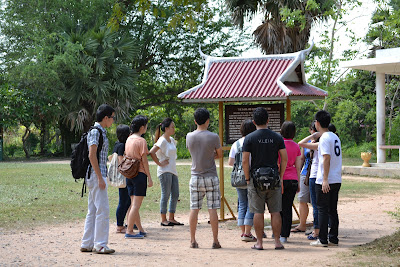There is a quite a scandal brewing in Southeast Asia this week surrounding Lady Gaga's concert tour. It seems religious hardliners in Indonesia object to her material and her presence and see it as a corrupting influence. Before the concert was cancelled today, 52,000 people bought tickets to the sold-out event. Lady Gaga was not the first western pop star scheduled to perform in Jakarta. The Pussy Cat Dolls and Beyonce have performed there in the past as well. In both cases, the artists agreed to wear slightly toned done attire as to not offend the local culture. Earlier this week, Indonesian Police refused to issue a permit for the concert after Islamic-extremist groups demonstrated against the event. Groups like the Islamic Defenders Front called Lady Gaga a spokesperson for the devil and declared her presence in the country a sacrilege. It appeared a deal had been worked out but then the same group claimed to have purchased 150 tickets to the concert and promised to disrupt it if the show went on as planned. Today, the producers of the show announced the concert was cancelled but promised a full refund to all 52,000 ticket holders.
School girls competing for free tickets to the Lady Gaga
concert in Jakarta
Pro-Gaga flash mobs broke out in Jakarta today expressing support for the artist and rebelling against the Islamic extremists who objected to the concert. The situation really highlights the conflict between the globalized, progressive, and liberal segment and more traditionally and religiously conservative elements in the world's most populous Muslim country. There is plenty to object to in Lady Gaga's performance including skimpy outfits, simulated sex acts, and lengthy monologues between songs about a variety of topics including homosexuality. In fact, this week Catholic hardliners in the Philippines are also objecting to Lady Gaga's scheduled concerts in that country.
Indonesia is most definitely a progressive country, however, this situation clearly highlights a conflict between religious conservatism and individual liberty (including the freedom of speech and expression). Do the 52,000 ticket holders and Lady Gaga have the right to expect protection from the local authorities in a country run by a sectarian government? Do the protestors below have the right to object to her performance or even her existence? It seems to me that the line was crossed (from an individual freedom point of view) when the anti-Gaga protestors threatened violence by claiming they held 150 tickets and would disrupt the concert. In the end, that was all it took to get the show cancelled. Should the Indonesian authorities have reassured the 52,000 concert goers they would be safe?
Indonesia is most definitely a progressive country, however, this situation clearly highlights a conflict between religious conservatism and individual liberty (including the freedom of speech and expression). Do the 52,000 ticket holders and Lady Gaga have the right to expect protection from the local authorities in a country run by a sectarian government? Do the protestors below have the right to object to her performance or even her existence? It seems to me that the line was crossed (from an individual freedom point of view) when the anti-Gaga protestors threatened violence by claiming they held 150 tickets and would disrupt the concert. In the end, that was all it took to get the show cancelled. Should the Indonesian authorities have reassured the 52,000 concert goers they would be safe?
AFP report on protest against Lady Gaga concert in Jakarta
For a better sense of the conflict and what the sides look like, watch both videos on imbedded in the blog. The juxtaposition is really interesting. What do you think?
Interesting Op-Ed from today's Jakarta Post:
Read the Op-Ed
Interesting Op-Ed from today's Jakarta Post:
Read the Op-Ed
.JPG)








